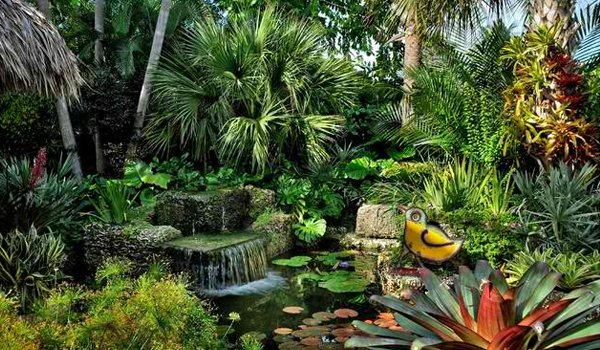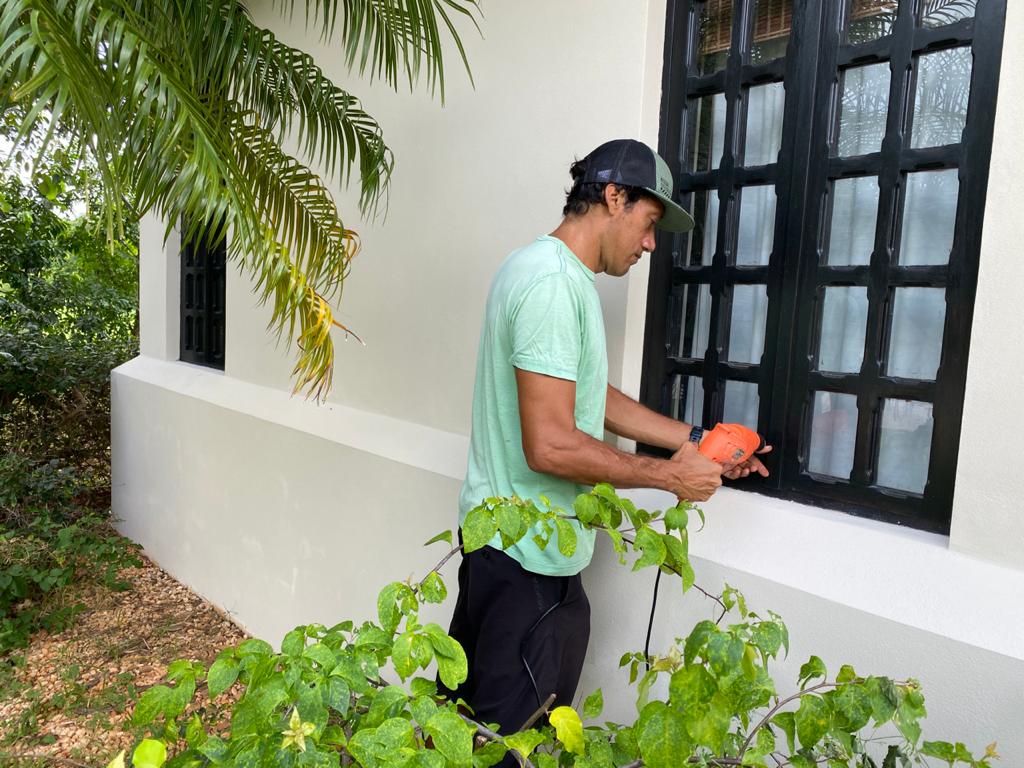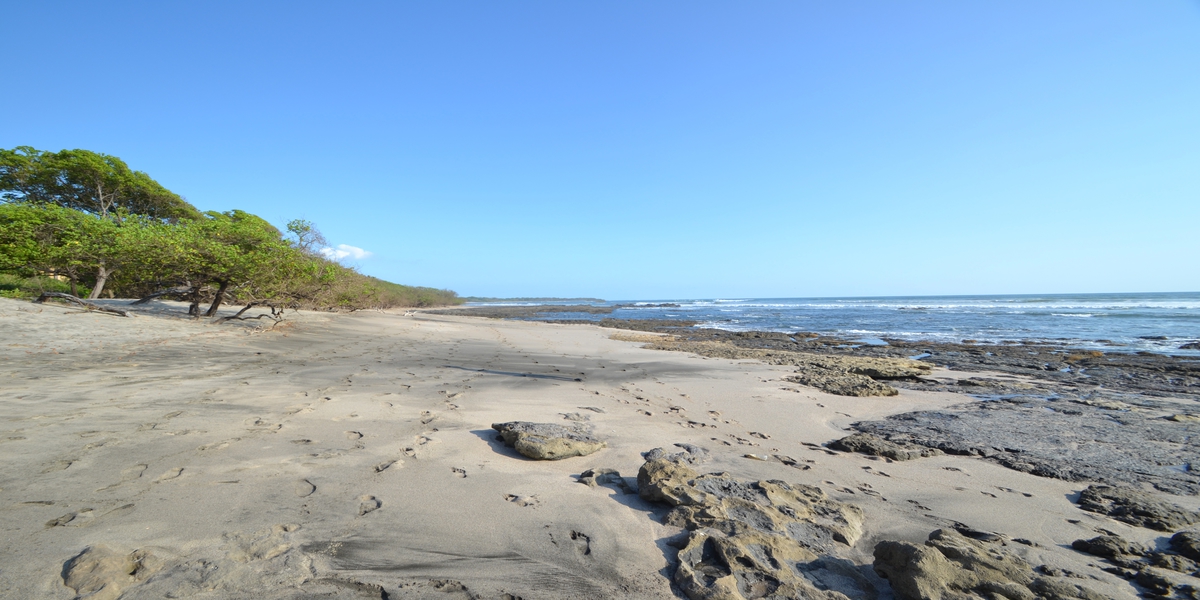 In Costa Rica, plants flourish in the heat and humidity of this wonderful tropical climate. The abundant wildlife is refreshed by the constant ocean breezes. Birds sing joyfully during the afternoon downpours. But houses in the tropics--that’s a different story. If they could sing, they wouldn’t. Homes take a beating from the unyielding sun of the dry season, the torrential rain of the wet season, and the salt carried onshore by the coastal winds. In addition, those birds, bugs, and other creatures that thrive in the tropics might want to make your home their home. It’s nature taking advantage of “mi casa es su casa”. So how can you protect your home from the harsh tropical elements?
In Costa Rica, plants flourish in the heat and humidity of this wonderful tropical climate. The abundant wildlife is refreshed by the constant ocean breezes. Birds sing joyfully during the afternoon downpours. But houses in the tropics--that’s a different story. If they could sing, they wouldn’t. Homes take a beating from the unyielding sun of the dry season, the torrential rain of the wet season, and the salt carried onshore by the coastal winds. In addition, those birds, bugs, and other creatures that thrive in the tropics might want to make your home their home. It’s nature taking advantage of “mi casa es su casa”. So how can you protect your home from the harsh tropical elements?
Roof Maintenance
Your home’s first and most important line of defense against the blazing sun and rainstorms is a well-maintained roof. Many roofs in Costa Rica are made of galvanized or painted metal sheets. Over time, sometimes many years, rust spots appear. Oxidation may show up sooner if the location is near the ocean or if the roof has been scratched by a falling limb or other objects. When the rust rears its ugly head, remove it with sandpaper or a wire brush. Then repaint the area with an anti-corrosive paint of a matching color. While you’re on the roof, replace any screws that have loosened, rusted, or lost their rubber gasket. These simple steps will ensure that your roof protects your home for years to come. Eventually, if you see that the paint has thinned in many areas and not just a few spots, it’s time to repaint the entire roof. Specially designed paint rollers are available to make the job easier and more effective. If you’re fortunate enough to have a tile roof, you can rest easy because they require very little upkeep.
Gutter Maintenance
The average annual rainfall in Tamarindo is 60 inches (150 cm), and most of it falls during the 6-month period known locally as “winter”. If that deluge splatters the side of your home, it can damage the paint or even underlying materials. Mold is another possibility, and even greater damage can occur if the rushing water erodes the foundation. To protect your home, gutters and downspouts carry that flood safely away. That’s why it’s important to periodically clean your gutters and ensure that the downspouts and drains are not clogged. If there are numerous deciduous trees near your roof, it’s wise to install guards that prevent your gutters from filling with debris, stopping up downspouts, and overflowing.

Ventilation
High humidity can wreak havoc on the interior of your home. Besides producing a green tinge on all your leather goods, humidity can loosen the paint on walls and ceilings. More importantly, it can lead to mildew and mold which not only have an unpleasant smell but also pose a significant health risk. Proper home maintenance in the tropics includes reducing the inside humidity, and there are two primary methods to accomplish it.
1) The natural means is to increase ventilation: open doors and windows and use fans to increase the airflow. Ceiling fans are a cost-efficient way to keep the air moving and help evaporate the moisture from damp areas.
2) The artificial means to reduce humidity is with a dehumidifier or air conditioner. Running either appliance regularly, especially in tighter spaces like closets and bathrooms, keeps your home and its contents in good condition.
Landscaping
What does landscaping have to do with home maintenance? It’s very important in tropical, coastal climates where plants grow like crazy. If you keep tree limbs trimmed and away from your house, your roof is less likely to be damaged in a storm. Plus, your gutters won’t fill with leaves as often. What about those beautiful ornamental plantings that surround your home? Pruning them on a regular basis will minimize the growth of mold and algae on your exterior walls and foundation.
Pest Control
Insects, birds, rodents, and other animals--like many of us humans--thrive in the consistent warmth of the tropics. That’s fine as long as the critters stay outside, but what if they want to live inside with you? The key to pest control is to eliminate their points of entry. Install screens on windows and doors, and make sure doors have gaskets or sweeps at the threshold. Block any gaps around the eaves where unwanted guests might enter your attic. And if pests are damaging wooden parts of your home, you can treat the wood with a repellent or replace it with a non-edible material. If you plan to be away from home for an extended period, have someone trustworthy check your home inside and out to make sure no pest has set up house while you’re away.
Maintenance on the Coast
An oceanfront or oceanview home is great for us occupants but not so beneficial for the home. The refreshing breeze brings with it destructive salt. How can you mitigate its effects? Pressure wash your home to remove the buildup of harmful sediments. You will probably need to repaint more often than you would further inland. And avoid ferrous metal outside whenever possible. Materials such as stone, cement, ceramic, stainless steel, aluminum, and even plastic will fare much better seaside. And the same rule applies to fasteners: nails, screws, and brackets. They may be small, but if they are made of steel and exposed to the salt air, they will eventually rust and fail.
Nothing can compare to living in the tropics near the ocean. The pleasant weather, the beautiful scenery, and the exuberant plant and animal life are unmatched. If you regularly maintain your Costa Rica home, you’ll enjoy to the full what the tropics have to offer.






